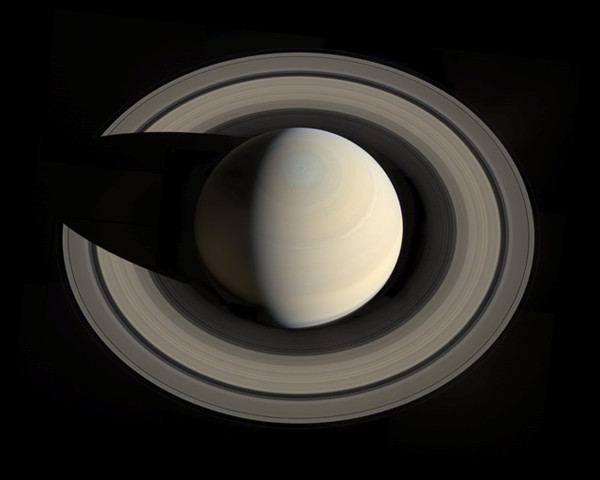
by Mary Caperton Morton Wednesday, September 3, 2014

Saturn's rings and moons are made up primarily of ice. Credit: NASA/JPL-Caltech/Space Science Institute/G. Ugarkovic.
Saturn is famous for its rings, but the sixth planet from the sun also has dozens of moons — 62 at last count, 53 of which have names — and now, according to new observations, it may have a 63rd. In April of last year, NASA’s Cassini spacecraft spotted a newly formed object at the edge of Saturn’s outermost A ring.
Less than a kilometer in diameter, the object is too small to be seen by telescopes from Earth, but it has already earned a nickname: Peggy. The new find was reported in April 2014 in Icarus.
Composed mainly of ice, like the rings, Saturn’s moons range in size according to their proximity to the planet, with more distant moons tending to be larger. Peggy marks the first time that the formation of a new Saturnian moon has been observed. “We have not seen anything like this before,” said author Carl Murray of Queen Mary University of London, in a statement. “We may be looking at the act of birth, where this object is just leaving the rings and heading off to be a moon in its own right.”
The object is not expected to grow larger and in fact, it may disintegrate, but it could provide some insight into how Saturn’s other moons formed, including cloudy Titan and watery Enceladus. The unmanned Cassini spacecraft will continue to orbit Saturn until 2017.
© 2008-2021. All rights reserved. Any copying, redistribution or retransmission of any of the contents of this service without the expressed written permission of the American Geosciences Institute is expressly prohibited. Click here for all copyright requests.